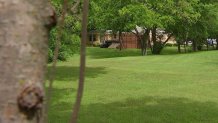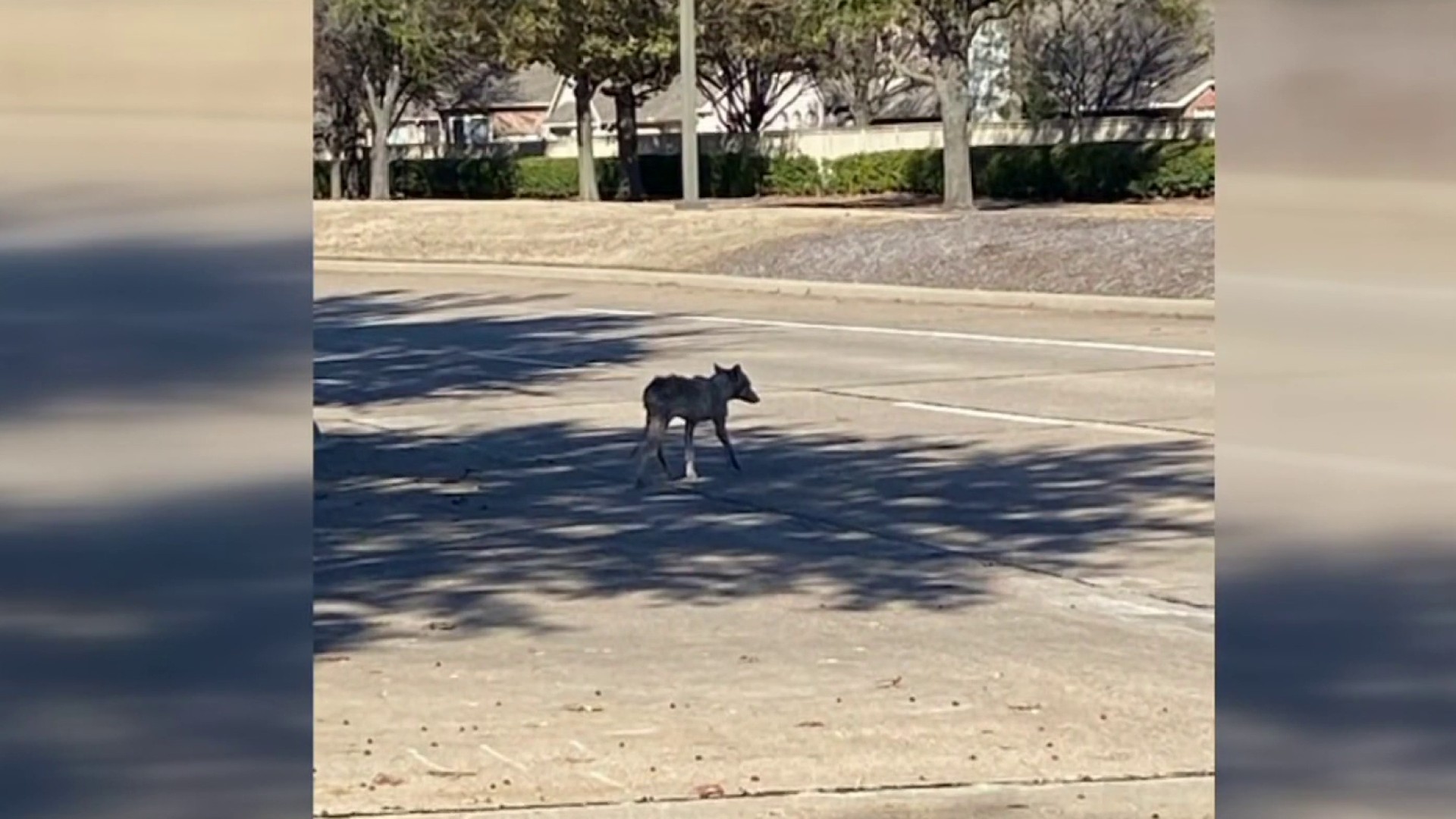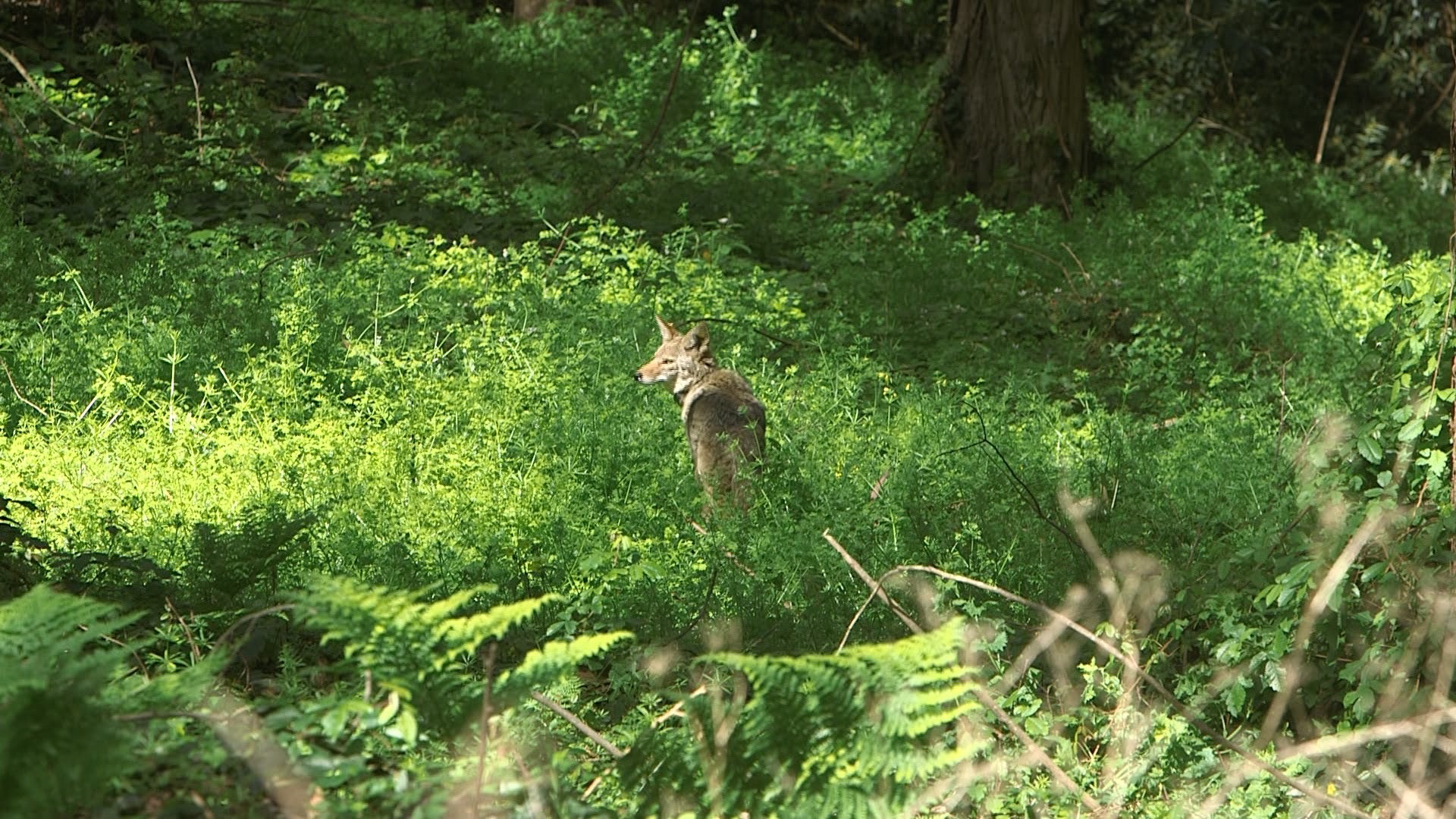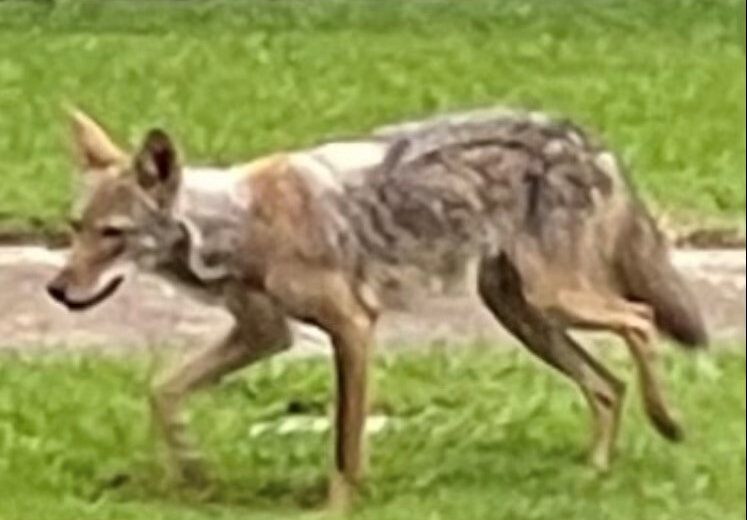One Dallas couple says they have become familiar with the characteristics, routes and times a furry visitor approaches their backyard.
“He has good-sized ears,” Tim Speck said. “We've seen it three or four times a week. Today we saw it. So, I'm sure tomorrow or tomorrow afternoon, Friday afternoon, probably it'll be around again.”
For the past few months, Speck has spotted a coyote. He thinks it is the same one that keeps returning.
“It’s pretty friendly,” he said. “He doesn't run from it very often and just kind of watches around."
Get DFW local news, weather forecasts and entertainment stories to your inbox. Sign up for NBC DFW newsletters.
Speck recently decided to make a formal report to Dallas Animal Services. His is one of more than 330 currently listed on the city’s heat map. The map is an expansion of the Coyote Management Plan.
The plan launched last year, shortly after a 2-year-old boy was attacked outside their Lake Highlands home on the 9200 block of Royalpine Drive.
Wildlife expert Jacqui Sutherland has helped lead the city’s efforts to educate people on how to coexist with wildlife.
"We've had, I mean, thousands of reports coming in from all different avenues. It's been quite a learning experience being completely immersed in it so quickly," Sutherland said.
According to Sutherland, of the hundreds of reports submitted, only four coyotes have had to be lethally removed.
"One was absolutely verified as the individual animal that was as that was responsible for the incident, but we ended up removing three other animals from that family," Sutherland said. "And in the process, we haven't had to lethally remove any other animals since We haven't had any escalations towards people. We haven't had any pets that are on leash with their owners, seriously injured or killed"
“It's really amazing how the animals work, why this species is so difficult for some people to manage and deal with,” Sutherland said.
She looks for signs of immediate threat to people and pets as well as the factors that could attract coyotes to the area.

“We're still dealing with a lot of cat feeders and a lot of people feed,” Sutherland said. “They just leave an abundance of food out overnight on a porch, maybe free access to food and water, you know, 24 hours a day. The coyotes, they figure that out very, very quickly.”
Sutherland said a feeding ordinance could help mitigate the issue.
"The biggest thing that's coming next is the approval of the of the feeding ordinance that we've been working so hard on. It was stuck in council for a while. We did a lot of different presentations," Sutherland said. "We're trying to educate about how it's appropriate to feed and how it's not appropriate to feed. I do think that's going to make a big difference. And it'll also encourage the feral cat colony caretakers."
However, each case differs. In the case of Speck, Sutherland said food is not the issue.
"There's a lot of attractants just in this backyard with a heavily wooded on that side. That storage container that's off the ground, which means opossums and skunks and rodents are living underneath it," Sutherland said. "So, he's here for that. All this woodpile, this, you know, attracts mice and rats and snakes, you know what I mean? So there's a reason he's here, and his presence is actually beneficial. We just want him to remember that he's a guest in our territory."
Sutherland installed game cameras on Speck’s property.
“I’ll be able to get eyes on the animals, see if he's healthy, does he have any injuries,” Sutherland said. "Usually we can tell if it's a male or female. We can get an idea of age as well as determine if it's the same animal that's coming and going or if it's actually two or three different ones that are just using the same pathway.”
As of now, Sutherland determined the coyote does not pose a threat to Speck, his family, their dog, or neighbors. Speck said it has given him some peace of mind ahead of the coyote's next visit.
“I’ll probably at some point give it a name,” Speck said.
Animal Services continues to encourage residents to report all sightings
"When everybody reports what they're seeing, no matter how basic they think it is, it helps me evaluate the territories, the individuals that are in that territory," Sutherland said. "I'm able to determine the minute that something starts to go a direction that might lead to a problem. I'm able to intervene, whether it's door-to-door education, social media education, coming out, investigating the area for natural food sources, unnatural shelter."
All findings from the city's Coyote Management Plan can be found on its website here.
To view the coyote heat map, click here.




